Many divers call the Galapagos Islands one of the most extraordinary places they’ve ever explored. But here’s the beautiful truth: you don’t need a heavy tank to witness the magic. Snorkeling in the Galapagos offers incredible up-close encounters, without the bulky gear, making it one of the most rewarding ways to experience the islands.
Unlike destinations where marine life stays far below, the Galapagos is famous for what happens near the surface. Imagine floating effortlessly while Galapagos sea lions spin and play beside you, marine iguanas feed below, and shimmering schools of fish move like living mosaics around your mask.
Scuba diving can be available on select departures for certified divers (requires pre-booking), but snorkeling is for everyone! It’s the most accessible way to step into the underwater world during your cruise and feel truly connected to the blue side of the Galapagos.
Why snorkeling on a cruise is a seamless experience
Travelers often ask: Where is the best place to snorkel in the Galapagos? In many cases, the answer comes down to access.
Some of the most pristine snorkeling areas—especially in the western part of the archipelago—are too remote for day trips. A Galapagos cruise allows you to reach these extraordinary sites smoothly, often arriving early to enjoy the water before anyone else.
How it Works: Deep Water vs. Beach Snorkeling On a cruise, you will typically experience two types of outings:
- Beach Snorkeling: You walk gently into the water from a white sandy beach. Perfect for beginners to get comfortable.
- Deep Water Snorkeling: A panga (small zodiac boat) takes you to a specific reef or rock formation. You jump from the side of the ship directly into the action. This is regularly where the best wildlife, like turtles and rays, congregate.
On most expeditions, snorkeling is a daily guided activity with equipment included—so you can focus on the experience, not the logistics.
Top snorkeling spots in the Galapagos Islands
Based on wildlife diversity and guest experience, these sites are standouts in our expeditions:
-
Devil’s Crown (Floreana Island)
A partially submerged volcanic cone that forms a natural ring in the sea, often calm inside and full of life. -
The Wildlife: Sea turtles, whitetip reef sharks, vibrant tropical fish, and occasional hammerhead sightings.
-
How to Visit: Featured on our South Expedition aboard Galapagos Legend.
-
Punta Espinosa (Fernandina Island)
A remote, pristine coastline in the western Galapagos, shaped by young lava and nutrient-rich waters.
-
The Wildlife: One of the most iconic snorkels in the archipelago, known for marine iguanas underwater, plus flightless cormorants and playful Galapagos penguins nearby.
-
How to Visit: Featured on our West Expedition aboard Galapagos Legend and Coral Yachts.
-
Bartolomé Island (Pinnacle Rock)
Clear, shallow waters near the famous Pinnacle Rock—often a favorite for beginners and families.
-
The Wildlife: Penguins gliding through the water, curious sea lions, and resting white tip reef sharks.
-
How to Visit: Featured on our East Expedition aboard Galapagos Legend and North Expedition on Coral Yachts.
And the best part? These are just a few highlights. Because each island offers something different, the best snorkeling in the Galapagos frequently comes from visiting multiple sites rather than just one location.
Galapagos snorkeling gear: what you need to know
One of the most common questions is: Do I need to bring my own gear?
-
Mask & Snorkel: Provided onboard. If you use a prescription mask, we recommend bringing your own.
-
Fins: Full-foot fins are included onboard.
-
Wetsuits:
-
Warm Season (Dec–May): A swimsuit is usually enough, though some travelers choose a wetsuit for added sun protection and comfort.
-
Cool Season (Jun–Nov): A wetsuit is recommended and is available onboard.
-
- Cameras: A GoPro or underwater camera is ideal—wildlife encounters often happen surprisingly close.
Marine species you’re likely to encounter
In the Galapagos, wildlife is wonderfully curious. Rather than swimming away, many animals continue their natural behaviors—letting you observe respectfully from nearby.
-
Galapagos Sea Lions: Playful, curious, and full of personality. They love to blow bubbles at snorkelers.
-
Pacific Green Sea Turtles: Gentle and common, often seen grazing on algae.
-
Manta Rays: Graceful giants that can reach up to 23 feet (7 meters) wide.
-
Galapagos Penguins: The only penguins found on the equator—fast, agile swimmers.
-
Marine Iguanas: A Galapagos icon. Seeing them swim with their long tails is a prehistoric sight.
-
Eagle Rays: Elegant “flying” rays that glide over sandy bottoms.
-
Colorful Reef Fish: Large schools of surgeonfish, parrotfish, and angelfish often surround you like a moving underwater cloud.
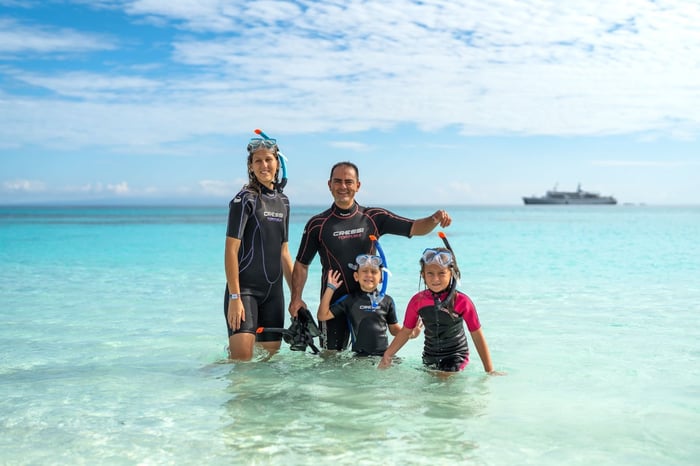
Best time for snorkeling in the Galapagos
The Galapagos is a year-round destination, so there’s always something incredible happening underwater. That said, the islands have two main seasons, and each one brings a slightly different snorkeling experience.
|
Feature |
Warm Season (Dec–May) |
Cool Season (Jun–Nov) |
|
Water Temp |
~76–80°F (Warm) |
~65–72°F (Cool) |
|
Visibility |
Excellent |
Good (more plankton) |
|
Wetsuit? |
Optional (Shorty/Swimsuit) |
Recommended (3mm/5mm) |
|
Highlight |
Easy swimming, tropical fish |
Big marine life, active whales |
There’s no bad time to snorkel in the Galapagos—each season offers a different underwater experience.
Snorkeling tips for a safe and enjoyable experience
- Give wildlife space: Animals may approach, but never touch—keep a respectful distance.
- Stay calm and comfortable: If water enters your snorkel, a steady exhale clears it easily.
- Use a flotation vest if needed: It helps you relax and fully enjoy the moment.
- Always follow your guide: Your certified naturalist guide reads conditions and currents—stay within sight of the group.
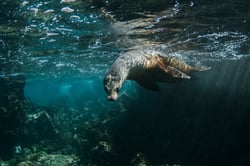
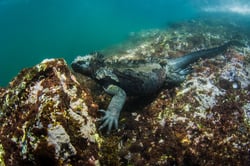
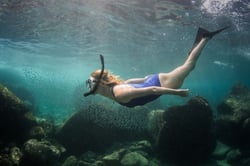
Ready to jump in?
Snorkeling in the Galapagos is the kind of experience that stays with you—quiet, vivid, and deeply alive. Whether you’re watching an iguana feed underwater or gliding beside a penguin, you’ll feel like you’re inside a living documentary.
Let’s design your 2026 Galapagos cruise—beautiful snorkeling, iconic wildlife, and effortless planning from start to finish.


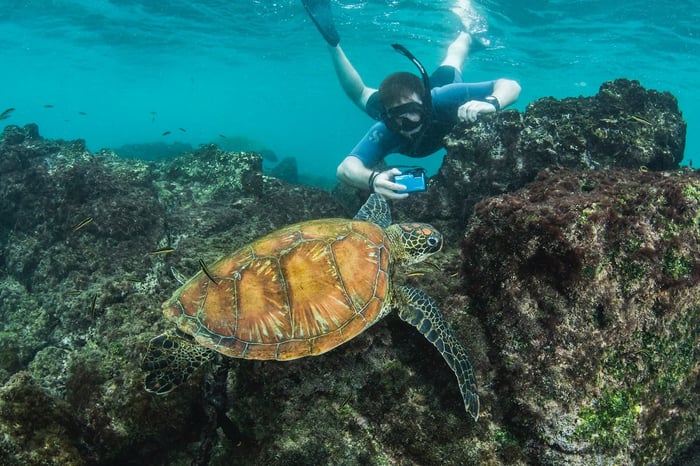

COMMENTS